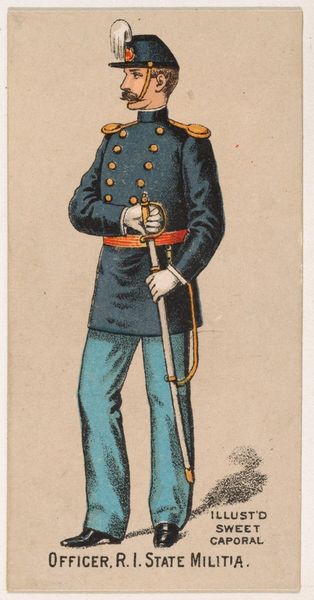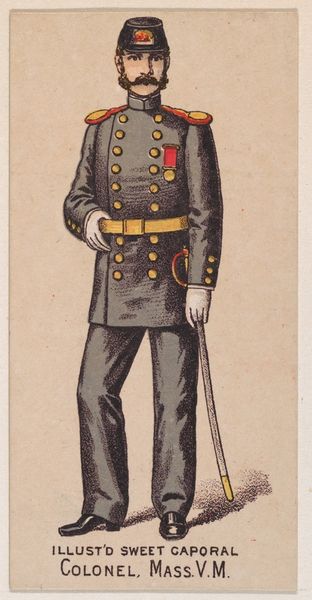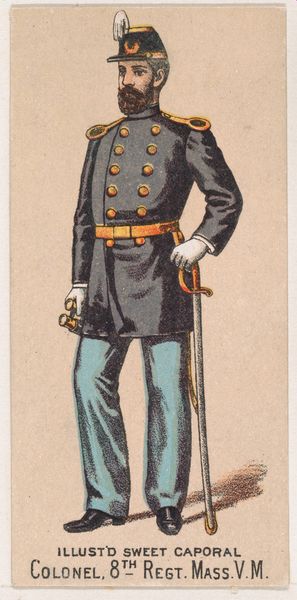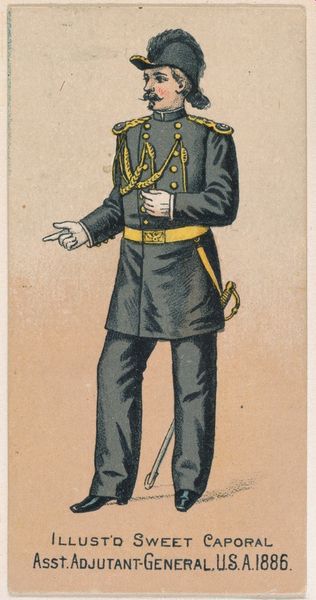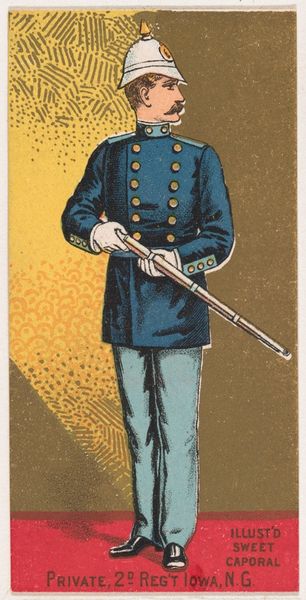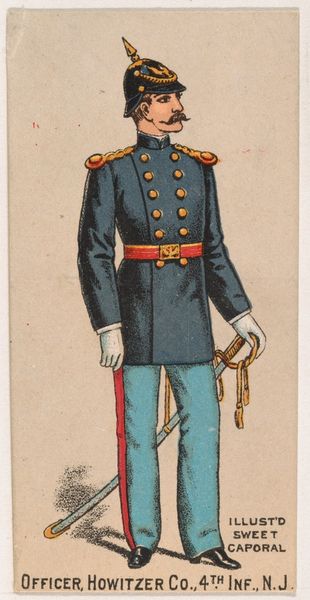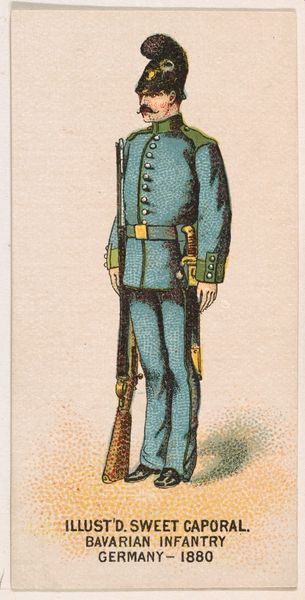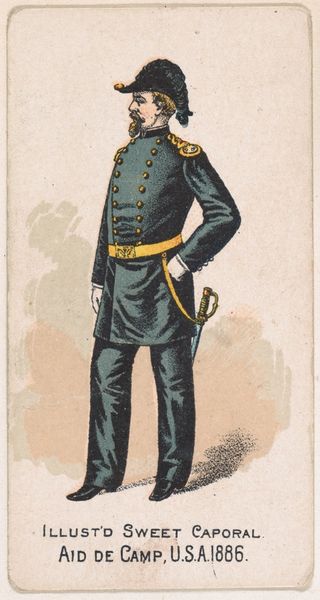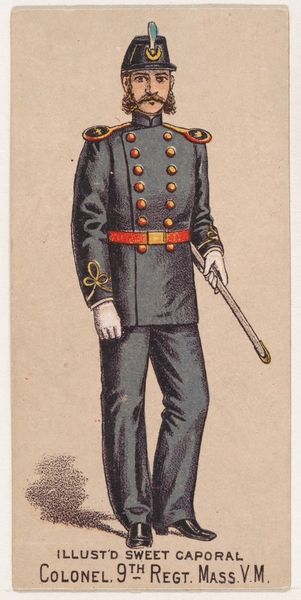
Private, Fenton Guard, Jamestown, New York, from the Military Series (N224) issued by Kinney Tobacco Company to promote Sweet Caporal Cigarettes 1888
0:00
0:00
drawing, print
#
portrait
#
drawing
# print
#
caricature
#
men
#
genre-painting
#
academic-art
#
profile
Dimensions: Sheet: 2 3/4 × 1 1/2 in. (7 × 3.8 cm)
Copyright: Public Domain
Editor: So, this is a lithograph from 1888 by Kinney Tobacco Company, titled "Private, Fenton Guard, Jamestown, New York". It was used as a promotional insert in cigarette packs. It's quite small, but the colors are still surprisingly vivid. What's your perspective on this image? Curator: As a promotional item, it tells us a lot about the social context of the late 19th century. The choice to depict a soldier, even in a somewhat romanticized, idealized way, reflects a culture that perhaps valorized military service and civic duty. Consider the industrial processes involved: lithography allowed for mass production, and therefore widespread dissemination of these images with the intent to shape consumer behavior. What can we infer about labor and accessibility? Editor: The mass production aspect is fascinating. These would have been churned out by the thousands. The depiction is a bit...caricatured though, isn't it? The figure is quite stiff. Curator: Exactly. The image isn't just about the soldier; it's about projecting a specific image tied to the product. Think about the materials. What ink would they use for affordable reproductions? Where would the paper stock come from, and how does this small print reflect a bigger manufacturing and consumption chain that touches different socio-economic levels? It links the consumption of tobacco to aspirations of patriotism. Editor: So, even this tiny piece points to larger trends of production and consumer culture at the time? I wouldn't have thought about it that way, looking at it just as a simple portrait initially. Curator: Absolutely. The materiality of the lithograph - the paper, the ink, the printing process, and the consumer culture it served, together expose a larger web of relationships. Editor: Thanks, that really broadened my perspective! Seeing it as a material product tied to its economic context opens up a whole new avenue of interpretation. Curator: Indeed. Always consider not just what is represented but the physical how, why and implications of its making.
Comments
No comments
Be the first to comment and join the conversation on the ultimate creative platform.

